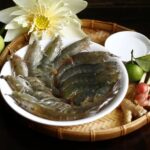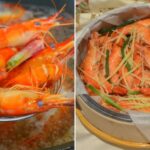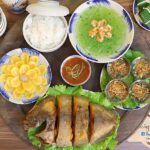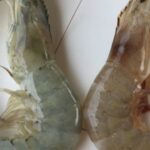Shrimp is a nutritious food, packed with calcium, and a common delicacy in everyday meals. Wild-caught shrimp not only has firmer flesh and a sweeter taste but also boasts superior flavor compared to its farmed counterpart.
However, not everyone knows how to differentiate between farmed and wild-caught shrimp. In reality, the trick to identification is quite simple and can be easily applied with a one-time explanation from the shrimp vendor.
Distinguishing Farmed and Wild-Caught Shrimp
When shopping for shrimp, many people still choose randomly due to a lack of knowledge about differentiating farmed and wild-caught shrimp. However, it’s essential to understand that wild-caught shrimp is usually more expensive than farmed shrimp, so some dishonest sellers may take advantage of this to inflate the price of farmed shrimp. To avoid this situation, it’s crucial for buyers to learn a few simple identification tricks.
First, carefully observe the shrimp’s exterior. Farmed shrimp typically has a darker shell, softer flesh, and a less firm texture. It tends to have a blander, less sweet taste. In contrast, wild-caught shrimp boasts a brighter shell, firmer and chewier meat, and a distinctively sweeter flavor.
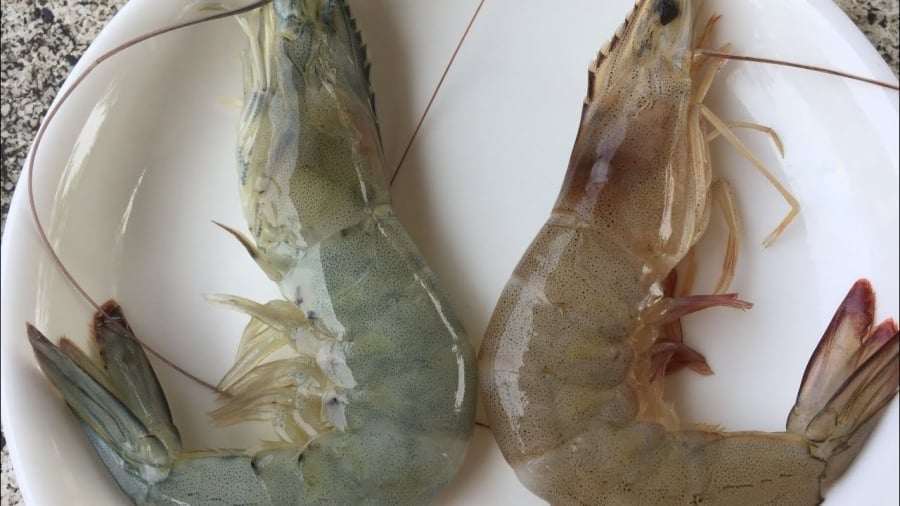
Additionally, when selecting fresh shrimp, pay attention to its behavior. A healthy shrimp will jump vigorously, have a sturdy shell, bright color, and firmly attached legs. Avoid shrimp with dull white shells, cloudy eyes, abnormally straight bodies, or loose heads. If there is mucus present or the legs have turned black, even at a low price, it’s best to avoid purchasing them as they are no longer fresh.
If you’re buying pre-cooked shrimp, try pulling the shrimp straight and observe the distance between the outer shell joints. If the shell joints are abnormally wide, the shrimp may have been overcooked or stored frozen for an extended period, compromising its freshness and taste.
Delicious Shrimp Recipes
Garlic Butter Shrimp
Garlic butter shrimp is a favorite among seafood enthusiasts. The rich, buttery flavor, combined with the pungent aroma of garlic, infuses each shrimp, creating an irresistible dish. The preparation is simple:
Step 1: Clean 500g of large shrimp, trimming the whiskers and legs. Fry the shrimp in a pan until cooked, with a red shell and firm flesh.
Step 2: Sauté one chopped garlic clove with five tablespoons of vegetable butter. Season with half a spoon each of sugar, salt, and pepper. Add chopped chili and spring onion, stirring until the sauce thickens.
Step 3: Pour the garlic butter sauce over the fried shrimp and serve immediately while hot.
Coconut Steamed Shrimp
Coconut steamed shrimp offers a gentle, subtle flavor, making it an excellent choice for children and the elderly.
Step 1: Prepare 400g of shrimp by trimming the whiskers, legs, and back vein.
Step 2: Boil the water from one coconut with one chopped shallot and a little seasoning to enhance the broth’s flavor.
Step 3: Place the shrimp in the pot and steam for about two minutes until they turn pinkish-red, then turn off the heat.
Step 4: Arrange the shrimp around the coconut for a beautiful presentation and enjoy.
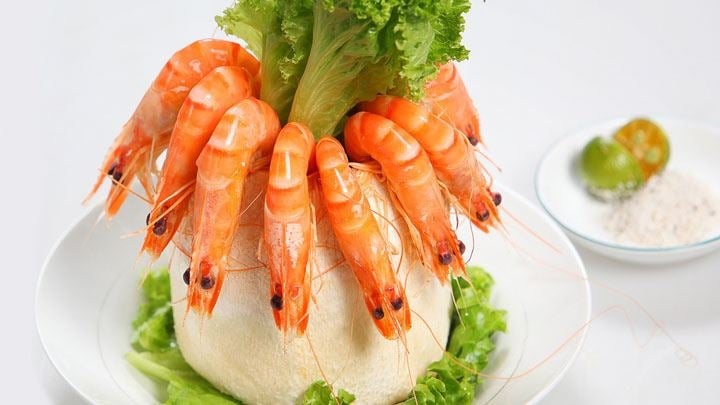
Soy Sauce Steamed Shrimp
Soy sauce-steamed shrimp is an excellent choice to add variety to your daily menu, offering a rich and unique flavor.
Step 1: Prepare the shrimp by removing the back vein and drying them.
Step 2: Sauté chopped shallots with shredded wood ear mushrooms. Add a little sugar, vinegar, and soy sauce to the pan and stir until the sauce boils, then turn off the heat.
Step 3: Cut a slit along the shrimp’s back and fill it with the mushroom and sauce. Steam for about ten minutes until the shrimp turns pink, and your delicious dish is ready to be served.
The Tiny Seafood Surprise: A Calcium-Rich Treat for Stronger Bones this Summer
Shrimp – A humble crustacean packed with a punch of nutrition, offering thrice as much calcium as soy and touted as a delicious “health food” during the summer months. This often-overlooked delicacy is a boon for bone health and a breeze to prepare, yet many Vietnamese are unaware of its benefits. Uncover the advantages of shrimp and learn to harness its full potential.


























